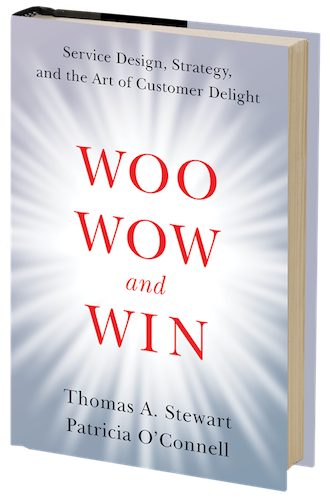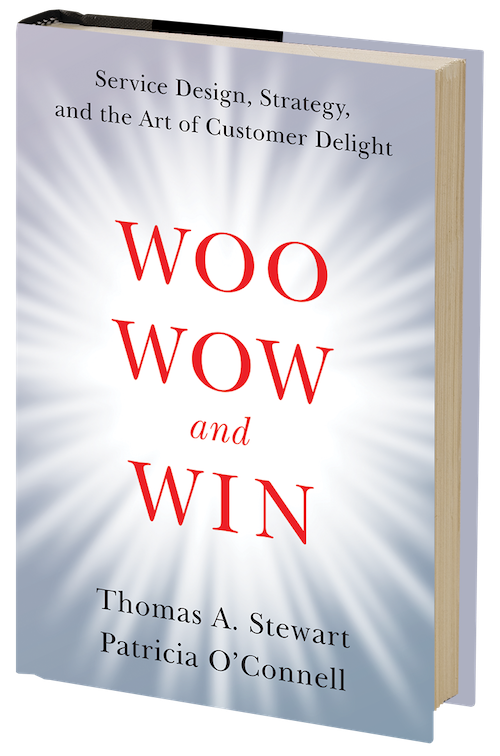This article was originally published by Inc. on Oct. 30, 2017
Focus on turning moments of intense emotion into signature experiences.
Great customer experiences don’t happen by chance. You need to provide tangible, consistent evidence of your value proposition wherever and whenever you touch customers.
But two of those touchpoints have an outsized impact on your ability to win and keep customers: what happens at the emotional high point of an interaction, and what happens at its conclusion — the peak and the end.
Findings about peak and end experiences from neuroscience have been documented by Nobel prizewinner Daniel Kahnemann, among others. But most businesses don’t know about the “peak-end rule” or haven’t thought about what it means for their business design. The peak-end rule says that people judge an experience largely based on how they felt at the peak and at the end of their experience
Indeed, most companies aren’t used to considering their customers’ emotions at all, except maybe to manipulate them with advertising or placating them when they’re angry. Ignoring those emotions is a mistake; understanding them is an opportunity.
Here are some ways to capitalize on the peak experience:
1. Know your customers’ peak experience.
For a tourist, the peak is often literally that: a moment when a breathtaking view is revealed. It might be the dazzling stained-glass windows that emerge at the top of a winding staircase at La Sainte Chapelle in Paris, or the stunning expanse of Machu Picchu appearing after a strenuous climb, the panorama of the Grand Tetons revealed as you mount the lobby steps at Jackson Lake Lodge.
But less-transcendent businesses and experiences have emotional peaks, too. Remember when you were handed the keys to the first car you bought, or when you learned you’d been approved for a mortgage? Hyatt hotels realized that a peak moment came when at the end of a flight or a day of meetings customers picked up a key, went up to their room, and, as the door closed behind them, tossed a suitcase onto the bed and exhaled.
2. Intensify the emotion.
Peaks are determined by the intensity of emotion, not by whether it is positive or negative. The moment when a surgery patient kisses a loved one and is wheeled into the operating room — that’s a peak. So is the sit-down with your boss for a performance review, the flight delay when you have a big meeting, or the envelope–thick or thin–from your first-choice college.
The peak may not be obvious to you, so you should ask, and as you map you customer’s journeys, find the high point.
3. Know what your customers are feeling.
At the Savannah College of Art and Design, students draw maps of customer journeys and often a section for noting customers’ emotions. Proud, excited, bored, harried, anxious–any of these feelings, or more, may be present along the way; and they may differ for different customers. You need to know what they are and, in particular, what emotions are foremost at the peak.
You can learn about these feelings retrospectively by asking customers what the big moment was and how they felt. But you should also ask prospectively. What are customers most looking forward to? What do they fear most about the experience you are providing? When they think about doing business with you, what hopes and concerns do they have? Don’t trust your own instincts: Peak experiences for your customers may be routine for you.
Once you know the peaks and the emotions, then decide what you want to do about them. Do you amplify them, the way music pumps you up on your way into a concert or a stadium? Or do your calm those emotions, the way tropical fish do in a dentist’s office?
4. Stage the experience and connect it to your brand.
Ironically, if you want an experience to be authentic, you may have to use a bit of artifice. A sommelier doesn’t bring a bottle of Chateau Lafitte to the table without a bit of ceremony.
Similarly, when your customer comes to a peak moment, help them make the most of it. The architect who designed the view at the Jackson Lake Lodge in the Grand Tetons knew exactly what he was doing.
Designing for emotion matters at least as much when emotions are or may be negative. One law firm we know has an ultramodern, loft-like office, where the surfaces are hard — glass, steel, concrete. Giving a deposition is a high-stress, peak-emotion experience, and these premises wouldn’t make it easier. But for clients or friendly parties, there’s a quiet place tucked away in a corner with soft upholstered chairs and warm lights — a place to take the edge off.
These peak moments are your opportunity to shine; they are also the moments that will stay longest in customers’ memories and have the strongest impact on what they think of their experience with you. Don’t blow it.
© Thomas A. Stewart and Patricia O’Connell



 Thomas A. Stewart and Patricia O’Connell are co-authors of the bestselling book Woo, Wow, and Win: Service Design, Strategy, and the Art of Customer Delight. Drawing on their combined experience as management experts, thought leaders, and journalists, Tom and Patricia offer groundbreaking insights into how companies create memorable, differentiating customer experiences that boost reputation, customer satisfaction, and the bottom line.
Thomas A. Stewart and Patricia O’Connell are co-authors of the bestselling book Woo, Wow, and Win: Service Design, Strategy, and the Art of Customer Delight. Drawing on their combined experience as management experts, thought leaders, and journalists, Tom and Patricia offer groundbreaking insights into how companies create memorable, differentiating customer experiences that boost reputation, customer satisfaction, and the bottom line.